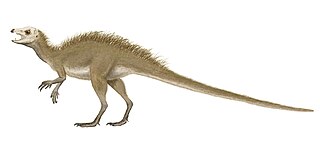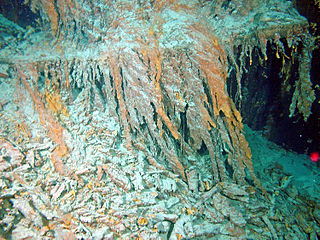
Papilio is a genus in the swallowtail butterfly family, Papilionidae, as well as the only representative of the tribe Papilionini. The word papilio is Latin for butterfly.

The flea beetle is a small, jumping beetle of the leaf beetle family (Chrysomelidae), that makes up the tribe Alticini which is part of the subfamily Galerucinae. Historically the flea beetles were classified as their own subfamily.

Graphium is a genus of mostly tropical swallowtail butterflies commonly known as swordtails, kite swallowtails, or ladies. Native to Eurasia, Africa, and Oceania, the genus is represented by over 100 species. Their colouration is as variable as the habitats they frequent; from rainforest to savannah. Some possess tails which may be long and swordlike, while others lack any hindwing extensions. Graphium species are often sighted at mud puddles.

The porro is a musical style and dance from the Caribbean region of Colombia. It is a Colombian cumbia rhythm that developed into its own subgenre. It was originally a folkloric expression from the Sinú River area that evolved into a ballroom dance. It is played mostly by brass bands or orchestras, and danced in couples. This genre influenced some of the greatest Latin American bands of the 1960s, with songs such as "Pachito E'ché", "Se va el Caimán", and "Me voy pa'Cataca"

Palaeosaurus is a genus of indeterminate archosaur known from two teeth found in either the Magnesian Conglomerate or the Avon Fissure Fill of Clifton, Bristol, England. It has had a convoluted taxonomic history.

Eurema is a widespread genus of grass yellow butterflies in the family Pieridae.

The chestnut-headed tesia is a small insectivorous songbird formerly of the "Old World warbler" family but nowadays placed in the bush warbler family (Cettiidae).

Capitosaurus is an extinct genus of temnospondyl amphibians whose remains have been found in Spitsbergen and Germany. Its skull was 30 cm long, with a total length over 122 cm. Several species have been assigned to the genus over the years, but only the type species C. polaris is still valid today.

Helicodontidae is a family of air-breathing land snails, terrestrial pulmonate gastropod mollusks in the superfamily Helicoidea.

Clithon is a genus of freshwater snails or brackish snails that have an operculum, aquatic gastropod molluscs in the family Neritidae, the nerites.

Prohalecites is an extinct genus of prehistoric ray-finned fish from the Ladinian and possibly Carnian (Triassic) of Italy, Switzerland and Austria. It is the oldest known teleosteomorph, a group that includes extant teleosts and their close fossil relatives.

Argna is a genus of air-breathing land snails, terrestrial pulmonate gastropod mollusks in the family Argnidae.

Fruitadens is a genus of heterodontosaurid dinosaur. The name means "Fruita teeth", in reference to Fruita, Colorado (USA), where its fossils were first found. It is known from partial skulls and skeletons from at least four individuals of differing biological ages, found in Tithonian rocks of the Morrison Formation in Colorado. Fruitadens is the smallest known ornithischian dinosaur, with young adults estimated at 65 to 75 cm in length and 0.5 to 0.75 kg in weight. It is interpreted as an omnivore and represents one of the latest-surviving heterodontosaurids.

Halomonas titanicae is a gram-negative, halophilic species of proteobacteria which was discovered on rusticles recovered from the wreck of the RMS Titanic. Cristina Sánchez-Porro et al. first isolated the bacterium in 2010 from a sample of rusticle obtained from the RMS Titanic in 1991. One of the researchers, Henrietta Mann has estimated that the action of microbes like Halomonas titanicae may bring about the total deterioration of the Titanic by 2030. While the bacteria have been identified as a potential danger to oil rigs and other man-made objects in the deep sea, it also has the potential to be used in bioremediation to accelerate the decomposition of shipwrecks littering the ocean floor.

The Hexanauplia constitute a class of crustaceans, comprising two groups: the Copepoda and the Tantulocarida. The former subclass Thecostraca was elevated to class rank and removed from Hexanauplia in 2021.
Roseomonas rosea is a species of Gram negative, strictly aerobic, coccobacilli-shaped, pink-colored bacteria. It was first isolated from a children's day care center in 1995. Further work on the isolate led to the proposal of a new genus and species, Muricoccus roseus in 2003. Further work on M. roseus found that the species belonged in the genus Roseomonas, and also led to Teichococcus ludipueritiae being reclassified as Roseomonas ludipueritiae in 2009. The new name for the species is Roseomonas rosea. The species name is derived from Latin rosea (pink), referring to the pink color the bacterial colonies will form, which is also a present in most Roseomonas species.

Pedro Antonio Porro Sauceda is a Spanish footballer who plays for Primeira Liga club Sporting CP, on loan from Manchester City. He also represents the Spain national team. Mainly a right back, he can also play as a winger.
Roseomonas gilardii is a species of Gram negative, strictly aerobic, coccobacilli-shaped, pink-pigmented bacterium. It is the type species of the genus Roseomonas. The new species was among the first Roseomonas species proposed in 1993, and is named for "Gerald L. Gilardi for his many contributions to bacteriology and, specifically, for his contributions in the area of glucose-nonfermenting gram-negative rods." R. gilardii is pathogenic for humans, causing bacteremia and other infections.
Kushneria aurantia is a Gram-negative, aerobic, non-spore-forming, rod-shaped and moderately halophilic bacterium from the genus of Kushneria which has been isolated from the surface of leaves from the mangrove Avicennia germinans.
Kushneria avicenniae is a Gram-negative and moderately halophilic bacterium from the genus of Kushneria which has been isolated from surface of leaves from the mangrove Avicennia germinans.















